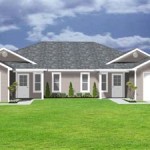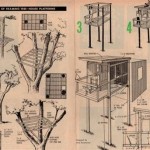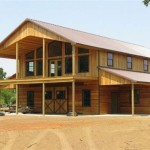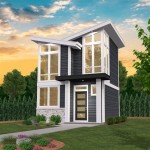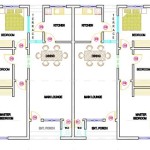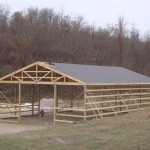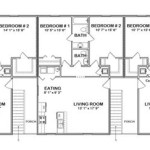One Story Log House Plans: Simplicity, Efficiency, and Rustic Charm
One story log house plans represent a compelling option for individuals seeking a blend of rustic aesthetics, practical living, and accessibility. These plans offer a unique architectural approach that prioritizes ease of movement, efficient space utilization, and connection with the natural surroundings. This article will delve into the advantages of one story log house plans, explore various design considerations, and discuss factors influencing the overall cost and construction process.
The appeal of log houses lies in their inherent natural beauty and the feeling of warmth and solidity they evoke. A single-story design amplifies these qualities by removing the complexities associated with stairs, promoting a seamless flow throughout the living space. This architectural approach is particularly advantageous for families with young children, individuals with mobility limitations, or those simply seeking a more relaxed and accessible living environment.
Accessibility and Aging in Place
One of the most significant advantages of a one story log house is enhanced accessibility. The absence of stairs eliminates a major obstacle for individuals with mobility challenges, making it easier to navigate the entire house. This feature is particularly beneficial for elderly individuals who wish to age in place comfortably and safely. Ramps and wider doorways can be easily incorporated into the design to further enhance accessibility. A single-level design also simplifies tasks such as cleaning and maintenance, as there are no stairs to navigate with heavy equipment or supplies. This makes single-story log homes a practical choice for individuals seeking a low-maintenance lifestyle.
Furthermore, one story log homes offer greater flexibility in terms of layout and design. The absence of a vertical division allows for a more open and flowing floor plan, which can be easily customized to meet the specific needs of the homeowner. For example, a one story log house can be designed with an open-concept living room, dining room, and kitchen, creating a spacious and inviting area for entertaining guests. Alternatively, the house can be designed with more distinct rooms for added privacy and separation. The key is that the design can be tailored to the homeowner's individual preferences and lifestyle.
The ability to age in place comfortably and independently is becoming increasingly important for many individuals. One story log homes provide a solid foundation for achieving this goal by eliminating architectural barriers and creating a safe and accessible living environment. This foresight can prove invaluable in the long term, allowing homeowners to remain in their homes for longer and avoid the need for assisted living facilities.
Energy Efficiency and Thermal Mass
Log houses are renowned for their energy efficiency, and one story designs can further enhance these properties. The thermal mass of the logs helps to regulate interior temperatures, reducing the need for extensive heating and cooling. During the day, the logs absorb heat from the sun, and at night, they slowly release this heat back into the house. This natural process helps to maintain a consistent and comfortable temperature throughout the year, reducing energy consumption and saving on utility bills.
The shape and orientation of a one story log house can also play a significant role in its energy efficiency. By carefully considering the position of the house relative to the sun, prevailing winds, and local climate, homeowners can maximize the benefits of passive solar heating and cooling. For example, a house oriented with its long axis facing south will receive maximum sunlight during the winter months, while strategically placed overhangs can provide shade during the summer. Proper insulation and sealing are also crucial for maximizing energy efficiency. Sealing gaps and cracks around windows, doors, and other openings will prevent air leaks and reduce energy loss.
Furthermore, a one story log house offers greater flexibility in terms of ventilation. Natural ventilation can be easily achieved by opening windows and doors on opposite sides of the house, creating a cross breeze that circulates fresh air and reduces the need for air conditioning. Skylights can also be incorporated into the design to provide natural light and ventilation. The combination of thermal mass, passive solar design, and natural ventilation can significantly reduce the environmental impact of a one story log house and create a more sustainable living environment.
Modern log homes often incorporate additional energy-efficient features such as high-performance windows and doors, energy-efficient appliances, and solar panels. These features can further reduce energy consumption and make the house even more environmentally friendly. The overall goal is to create a comfortable, sustainable, and cost-effective living environment that minimizes reliance on fossil fuels.
Design Considerations and Customization
Planning a one story log house involves careful consideration of various design elements to ensure the final product meets the homeowner's specific needs and preferences. The size of the house, the number of bedrooms and bathrooms, the layout of the living spaces, and the overall aesthetic style are all important factors to consider. One story log houses can range in size from small cabins to sprawling ranch-style homes, depending on the needs of the homeowner. The design can be tailored to accommodate a variety of lifestyles, from single individuals to large families.
Log selection plays a crucial role in the overall look and feel of the house. Different types of logs, such as pine, cedar, and fir, offer varying degrees of durability, insulation, and aesthetic appeal. The size and shape of the logs also affect the appearance of the house. Round logs create a more rustic and traditional look, while square or rectangular logs offer a more modern and contemporary aesthetic. The choice of log style depends on the homeowner's personal preferences and the overall design of the house.
The roof design is another important consideration. Gable roofs, hip roofs, and shed roofs are all common choices for log houses. The roof pitch, overhang, and roofing material can all affect the appearance and performance of the house. A well-designed roof will protect the house from the elements, provide adequate insulation, and enhance the overall aesthetic appeal.
Interior design elements, such as flooring, cabinetry, and fixtures, also play a significant role in creating a comfortable and inviting living space. Hardwood floors, tile floors, and concrete floors are all popular choices for log houses. The choice of flooring material depends on the homeowner's preferences, budget, and lifestyle. Custom cabinetry, natural stone countertops, and handcrafted lighting fixtures can add a touch of luxury and sophistication to the interior design. The key is to create a cohesive and harmonious design that complements the natural beauty of the logs.
Outdoor living spaces, such as porches, decks, and patios, can also enhance the enjoyment of a one story log house. A spacious porch can provide a comfortable place to relax and enjoy the surrounding scenery. A deck can be used for outdoor dining and entertaining. A strategically placed patio can create a private and secluded outdoor retreat. Outdoor living spaces can be designed to seamlessly integrate with the natural environment, creating a harmonious and inviting outdoor living experience.
In addition to the interior and exterior design elements, it is also important to consider the site plan. The orientation of the house, the location of the driveway and parking area, and the placement of landscaping elements can all affect the functionality and aesthetic appeal of the property. The site plan should be carefully considered to maximize the benefits of the surrounding environment and create a comfortable and inviting living space.
Ultimately, the design of a one story log house should reflect the homeowner's individual needs, preferences, and lifestyle. By carefully considering the various design elements and working with an experienced architect or designer, homeowners can create a unique and personalized living space that they will enjoy for years to come.
Cost Considerations and Construction Process
The cost of building a one story log house can vary significantly depending on several factors, including the size of the house, the type of logs used, the complexity of the design, and the location of the building site. Log houses generally cost more to build than conventional stick-built houses due to the specialized labor and equipment required for log construction. However, the long-term benefits of log houses, such as energy efficiency and durability, can offset the initial higher cost.
Log selection is a major factor influencing the cost of construction. Different types of logs vary in price depending on their availability, quality, and aesthetic appeal. The size and shape of the logs also affect the cost. Larger logs require more handling and transportation, which can increase the overall cost of construction. The method of log construction also influences the cost. Hand-hewn logs are generally more expensive than machine-milled logs due to the labor-intensive process involved in hand-hewing.
Site preparation is another important cost consideration. The building site must be properly graded and leveled before construction can begin. The cost of site preparation can vary depending on the terrain and the amount of excavation required. If the site is located in a remote area, the cost of transporting materials and equipment to the site can also increase the overall cost of construction.
The construction process for a one story log house typically involves the following steps: site preparation, foundation construction, log wall construction, roof construction, window and door installation, interior finishing, and exterior finishing. Log wall construction is the most specialized aspect of the process and requires skilled log builders. The logs must be carefully stacked and joined together to create a weathertight and structurally sound wall. The gaps between the logs must be properly sealed to prevent air leaks and water damage.
Permitting and inspections are also required throughout the construction process. Building permits are required to ensure that the construction complies with local building codes and regulations. Inspections are conducted at various stages of construction to ensure that the work is being done correctly and to code. The cost of permits and inspections can vary depending on the location of the building site.
Managing unforeseen expenses during the construction process is critical to staying within budget. Unexpected issues, such as soil conditions or design modifications, can arise during construction that increase costs. These situations require careful planning and resource allocation to prevent project overruns.
The construction of a one story log house is a complex and challenging process that requires careful planning, skilled labor, and attention to detail. By thoroughly researching the costs and understanding the construction process, homeowners can ensure that their dream log house becomes a reality without exceeding their budget.

One Level Floor Plans Log Cabin Cabins For Less

Single Story Log Homes Floor Plans Kits Battle Creek

Pin By Gary Bona On Log Cabin Stuff Home Floor Plans House

Lakeland Floor Plan Log Cabins For Less

Four Seasons Plans Information Southland Log Homes

Log Home Floor Plans Engineering Custom Blueprints

Fall River Log Home Plan By The Original Lincoln Logs

Single Story Log Homes Floor Plans Kits Battle Creek

Battle Creek Log Homes Delivers A Range Of Floor Plans Kits For Single Story To Customers Nationwi Home Flooring

One Story Log House With Wrap Around Porch Homes Lifestyle

